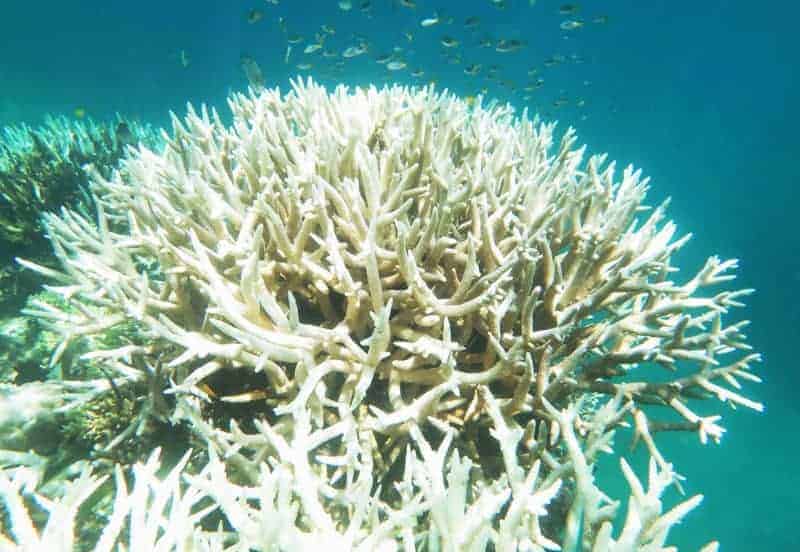Parts of the Great Barrier Reef are showing signs of heat stress, raising the risk of another major coral bleaching event, scientists from the Great Barrier Reef Marine Park Authority have announced. Eastern Australia has experienced a long period of warmer than usual ocean currents, which has increased water temperatures across two-thirds of the reef 2 to 3 degrees Celsius above average for February, Reuters reported.
Scientists warned that if water temperatures do not drop in the next two weeks, the bleaching would likely become widespread. It would be Australia’s third major coral bleaching event in five years, with the others in 2016 and 2017.
“We are down to the wire,” Terry Hughes, director of the ARC Centre of Excellence for Coral Reef Studies at James Cook University, told The Guardian.
Marine biologists are closely monitoring the reef, conducting diving surveys and helicopter patrols, as well as working with citizen science volunteers to collect data. One scientist told Reuters that he had seen some level of bleaching of 30 to 40 percent of the coral in shallow waters.
The news comes on the heels of a new report that says warming ocean temperatures, acidification, and pollution could kill about 70 to 90 percent of all existing coral reefs in the next 20 years. Nearly all the world’s coral could be gone by 2100, according to the study, which was led by researchers at the University of Hawaii Manoa.


My 2¢: The modern global warming movement is not based on sound science. What is meant by “global warming” effectively is an alleged man made rise in ocean temperature. Atmospheric CO2 could not cause noticeble ocean temperature rise but water pollution (mostly from Asia) could. Human water pollution is off the charts and the effects are obvious along the coasts and asian rivers. The oceans viewed from space show large algae blooms everywhere near large human populations. Algae blooms are caused by polluted water, not CO2. Algae evolved to absorb more sunlight (clean water reflects most sunlight). Its similar for dead zones: Darker water absorbs more sunlight than clean water. Oceans are 75% of the planet surface and direct solar heating has the biggest effect on ocean temperature. The modern world uses the oceans as a convenient toilet and now even the Ganges has dead zones. These dead zones are caused by water pollution, not CO2. Ocean surface temperature rise is just one of the symptoms of water pollution.
Human water pollution consists of: human biological waste, farm waste, phosphates, nitrates, plastics, garbage, toxic industrial wastes from chemicals to oil, carcinogens, not nice, etc. This water pollution causes ocean oxygen depletion, dead zones, acidification, algae blooms, and artificial rising ocean temperature. Water pollution needs to be handled efficiently and economically to solve the problem.
Both CO2 and O2 are the foundation of life on earth, pure gases, not pollutants, and neither significantly affects ocean temperature. Focusing on CO2 is wasteful, will hurt economies, and will accomplish nothing. There is the huge unspoken problem of human water pollution which is swept under the rug while societies squander resources incorrectly focusing on CO2.